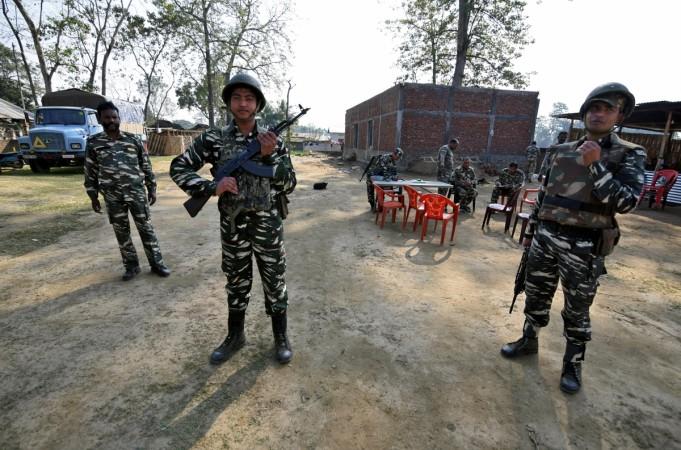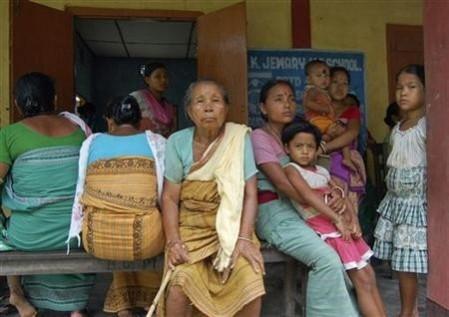
The crux of the Assam question sweeping national headlines now is who are the original Assamese people. The final draft of the National Register of Citizens in Assam (NRC) has unequivocally said that as many as four million people, whose domicile is in the state, are not Assamese. They will have to eventually leave, if their challenge is not accepted.
The NRC has said the original inhabitants category will not be added in the final document. It decided so after religious minorities like Muslims and Christians, various tribal groups as well as Gorkhas and Bengali settlers demanded they should be termed as original inhabitants. In the event, the NRC will merely exclude the illegal inhabitants, which itself will be a contentious decision.
What is unique Assamese identity?
If the four million people don't successfully challenge their exclusion, they will have to leave the state. That's easier said than done, and it's not clear where exactly they should go. Did they all come from Bangladesh? Are they victims of plain vote bank politics? Why is it that while Hindu migrants from Bengal are acceptable for BJP, Muslim migrants are not? Why didn't the Congress and today's opposition check the influx of illegal immigrants throughout the last several decades? And why do they support the inclusion of millions of people who flooded into the land from Bangladesh?
And most importantly, is Assam not entitled to preserve its original cultural and demographic make-up? If so, what exactly is that unique Assamese identity?
NRC Background
The NRC row goes back to 1951, when the first registry was prepared to determine who are Assam's original inhabitants. The region witnessed several waves of migration in the following decades and the eventual creation of Bangladesh in 1971 became the biggest turning point in the state's history. The Assam Accord of 1985 settled the simmering anti-foreigner movement, but the key provision in the agreement was that all immigrants who entered the state after 25 March 1971, had to be identified and deported.
The NRC had to be updated to make this happen but the vexing problem was dragged on for decades until the Supreme Court gave the final ruling that the registry had to be updated within a timeframe. That process has come to partial conclusion now, with the publication of the final draft of the registry.
Assam History
The word Assam comes from the Sanskrit word Asom which means unequal. This may have referred to the undulating topography of the region, but the Sanskrit word also means unrivalled or peerless. The other theory that explains the state's name is that the nomenclature derives from the Mongolian Ahom dynasty that ruled the region for hundreds of years since the 13th century.
Assam's recorded history goes back to the 4th century BC. Chinese explorer Chang Kien had written about trade between Assam and China as far back as 100 B.C.
The region was an independent kingdom throughout much of its history, until British India annexed it in the early 19th century. The entire region joined India after the partition, except the district of Sylhet that joined Pakistan. Later on states such as Arunachal Pradesh, Nagaland, Mizoram and Meghalaya were carved out of Assam.
Early inhabitants

The earliest inhabitants in the region were the Australoids or the pre-Dravidians. The region became a boiling pot after the Mongoloids arrived over the eastern hills. After centuries of the Ahom rule, it was the turn of the Mughal empire to attack Assam. The battles with the Mughals -- they attacked Assam as many as 17 times -- left its own imprint on the racial and demographics evolution of the region.
The Ahoms were able to withstand the Mughal onslaught but the prolonged resistance depleted the Ahom kingdom and they were overpowered by the Burmese later on, adding another pattern to the racial fabric. It took the British in the early 19th century to push the Burmese back from the region.
Ethnic legacy

Assam's ethnic composition is a mosaic. High levels of assimilation happened over centuries but the traces of the races that arrived from places like Tibet, China, Thailand and broader Southeast Asia are discernible. On the cultural and front as well, the mixed legacy is evident. The present-day Assam is the result of a confluence of many civilisations and that includes Mongolian, Indo-Burmese and the ancient Aryan.
Religious composition
About two-thirds of the Assamese are Vaishnavite Hindus, while about one-fourth of the population practices Islam. The Encyclopedia Britannica states that most of the Muslims in Assam are settlers from Bangladesh or converts from the lower strata of Hindu society. There is also a small minority of Christians in Assam. Among them are sizeable numbers of people who converted from the Scheduled Tribes.









!['Had denied Housefull franchise as they wanted me to wear a bikini': Tia Bajpai on turning down bold scripts [Exclusive]](https://data1.ibtimes.co.in/en/full/806605/had-denied-housefull-franchise-they-wanted-me-wear-bikini-tia-bajpai-turning-down-bold.png?w=220&h=138)



